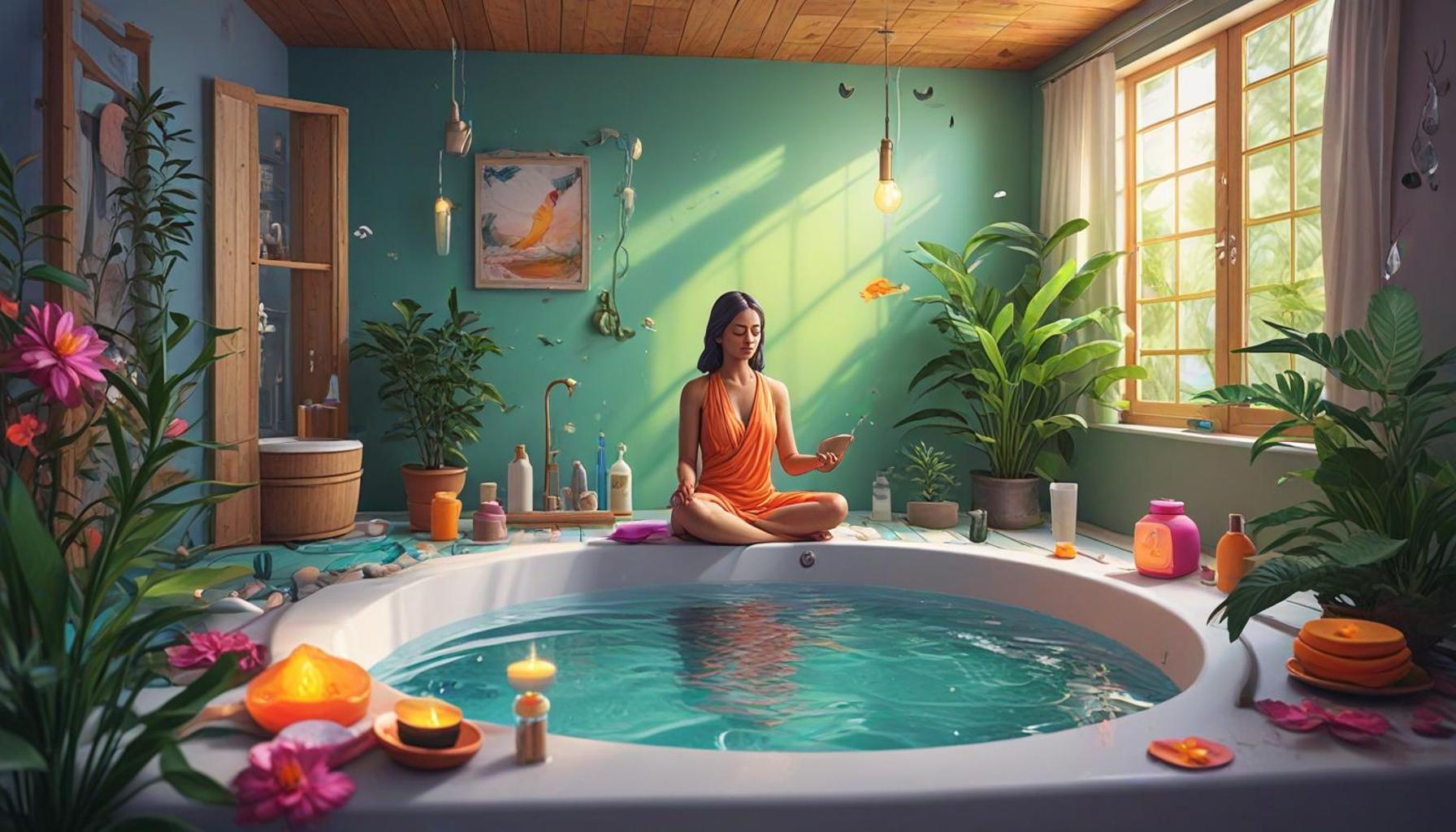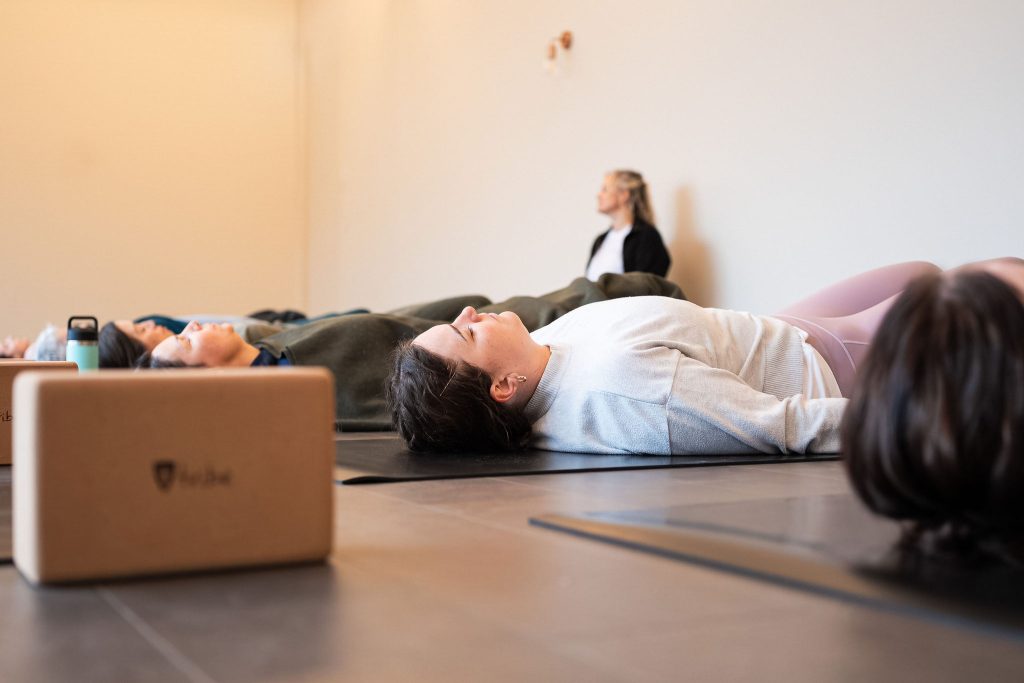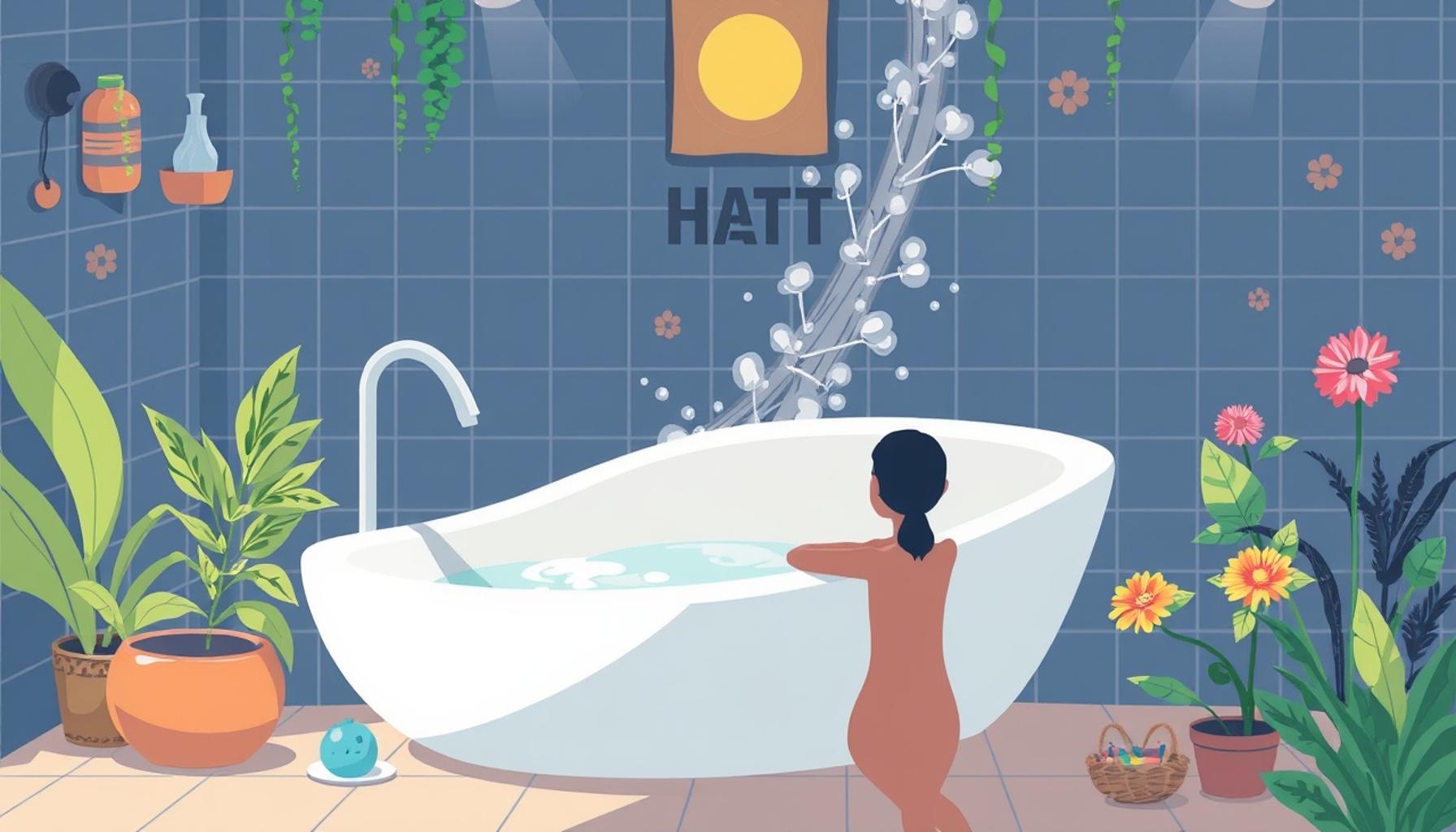Create a Bath Space for Meditation Emotional Balance A Guide

In our fast-paced world, finding moments of peace and tranquility can be challenging. Creating a dedicated space for shower meditation not only helps to rejuvenate the mind but also aids in achieving emotional balance. This unique approach to self-care transforms an everyday activity into a profound ritual that fosters mindfulness.
By curating an environment that promotes relaxation, you can enhance your meditation practice and cultivate a deeper connection with yourself. Consider the following elements that contribute to a serene atmosphere:
- Lighting: Soft, dim lighting helps set a calming mood.
- Scents: Aromatherapy through essential oils can elevate your experience.
- Sound: Gentle music or nature sounds foster a peaceful ambiance.
- Materials: Natural elements like plants or stones can enhance tranquility.
- Temperature: Warm water can soothe both body and mind.
In this article, we will explore the top 5 tips for creating an ideal bathing environment that encourages meditation and nurtures emotional well-being. Get ready to transform your shower into a sanctuary of peace.
ADDITIONAL INSIGHTS: Expand your understanding here
Top 5: How to Create a Bath Environment that Promotes Meditation and Emotional Balance
Engaging in shower meditation can truly transform an everyday chore into an enriching practice for achieving emotional balance and well-being. This transformation is possible through creating a meticulously planned environment that encourages mindfulness and tranquility. In this enlightening guide, we delve into the top five elements that can form the foundation of such an atmosphere. By fully incorporating these elements, you can elevate your shower routine from mere hygiene to a soul-nurturing, meditative experience. Let’s immerse ourselves in these ideas!

5. Nature Sounds: A Gateway to Relaxation
The inclusion of nature sounds is more than just an auditory addition; it’s a journey into natural tranquility. Imagine the ambiance set by gentle raindrops or the distant sound of ocean waves as you immerse yourself in your bathing ritual. This natural concert serves as an antidote to stress and anxiety, allowing the mind to wander away from urban life confines.
Nature sounds help simulate an atmosphere that our brains recognize as safe and peaceful, thus reducing cortisol levels — the hormone associated with stress — and promoting a state of calm. Evidence suggests that people who regularly expose themselves to these sounds might experience fewer stress-related ailments. To integrate this element, consider acquiring a waterproof Bluetooth speaker, strategically placed for optimal acoustics, or find soundtracks online that cater specifically to bathtime meditation.
- Benefits of Nature Sounds:
- Stimulates relaxation and mental clarity.
- Helps to focus thoughts and sustain meditative states.
- Creates a natural escape from stimuli that induce anxiety.
4. Aromatherapy: Scenting Your Space
The olfactory system is potent and deeply connected with the limbic system, the part of our brain that deals with emotions and memories. Utilization of aromatherapy in your bathing routine can effectively modify your emotional state. Essential oils such as lavender, with its notable calming effects, or invigorating peppermint, can make baths more than just a physical cleanse but also a mental one.
To effectively incorporate aromatherapy, diffuse essential oils or utilize personal steamers designed for showers. Even hanging eucalyptus or using bath bombs and shower gels infused with essential oils can significantly alter your emotional space. This fragrant atmosphere leads to the activation of neurotransmitters within your brain, which work to clear mental clutter and enhance serenity.
3. Lighting: Setting the Mood
Lighting dramatically affects our mood and can swing the ambient atmosphere from harsh to harmonious. The goal is to select lighting that aligns with your meditative intentions. Gentle, soft lighting can mimic the natural progression of dusk, encouraging the body’s melatonin production and thus, relaxation.
Options such as dimmable LED fixtures, which allow for a broad range of intensities and colors, are highly effective. Alternatively, candles offer not only a soft glow but also the flickering flame can serve as a focal point in concentration exercises. Innovatively, some use LED bulbs that change colors, where lighter tones like turquoise or warm pink can support calm and focus. Remember safety first when using candles, keeping them distant from potential hazards.
2. Touch: The Power of Water
Rarely do we contemplate touch as a tool in meditation, yet the sensation of water streaming over the skin can be a tool for grounding in the present. The warmth and rhythm of water provide a sensory input that encourages mindfulness, similar to the gentle tapping used in Emotional Freedom Techniques (EFT).
Experimentation is key in discovering what resonates best with you—perhaps it’s the drumming of a rain showerhead or the enveloping hug of the steam that triggers your state of mind. Adjust the temperature to discover how your body responds, whether a warmer experience eases muscles or a cooler one invigorates. As the water envelops you, focus on this fleeting, but constant, flow to keep your present awareness alive.
1. Intention Setting: Grounding Your Experience
At the core of meditation lies the power of intention setting. Before commencing your showering ritual, pause to establish a firm purpose. This extends beyond just planning, setting deeper goals such as releasing accumulated tension, cultivating gratitude, or visualizing a positive encounter in life.
The practice of intention can be deepened through verbal affirmation or jotting down a note to manifest your aspirations tangibly. When you articulate these goals, you permit the surrounding ambiance—from the calming sounds and aromas to the dim lights—to focus on reinforcing your intentions. This cultivation ensures that each shower session is a deeply revered time for self-care and restoration.
By embracing these five guiding elements, you can transform your bathing space into a meditative sanctuary. Designed to support emotional well-being and spiritual growth, these modifications encourage mindful living. With each calculated change, invite yourself to explore the depths of personal reflection and sensory delight, turning a mundane necessity into an opportunity for emotional rejuvenation.
| Category | Key Features and Benefits |
|---|---|
| Aromatherapy | Incorporating essential oils, like lavender and eucalyptus, can enhance relaxation. The right scents can trigger emotional responses that promote tranquility and stability. |
| Lighting | Soft, adjustable lighting can dramatically affect mood. Using candles or dimmable fixtures creates a calm atmosphere, conducive to meditation and emotional balance. |
| Soundscapes | Natural sounds, such as flowing water or birdsong, can reduce stress levels. Creating a sound environment that allows for immersive meditation enhances overall emotional well-being. |
| Spa Elements | Elements like a soaking tub or a shower with a rainfall feature can provide sensory experiences. This helps to soothe the body and mind, allowing for deeper meditative practices. |
Setting up an inviting bathing environment isn’t just about aesthetics; each element plays a crucial role in contributing to a space where meditation flourishes and emotional equilibrium is nurtured. Each of these categories should engage the senses, creating a refuge that ultimately promotes the individual’s wellness journey. By exploring the intricacies of these categories, one can learn how to manipulate their own environment to yield profound emotional and mental benefits. Through informed choices, the bathroom can transform into a sacred space that reinforces personal tranquility and mindfulness.
ADDITIONAL INSIGHTS: Expand your understanding here
Frequently Asked Questions about Creating a Bath Environment for Meditation and Emotional Balance
What elements can I add to my bathroom to enhance meditation and emotional balance?
To transform your bathroom into a sanctuary of peace, consider adding elements that stimulate your senses. Aromatherapy is a popular choice, where essential oils like lavender or eucalyptus can help calm the mind. Lighting is also crucial; dim lights or candles can create a serene atmosphere. Finally, sound can play a huge role—soft, ambient music or the gentle trickle of water can help facilitate deep relaxation and meditative states.
How can the practice of meditation in the bath impact my emotional well-being?
Taking time to meditate in the bath offers a dual benefit; the physical immersion in warm water and the mental practice of meditation. This combination can significantly reduce stress levels, encourage mindfulness, and promote a sense of interconnectedness with your emotions. Psychological studies have shown that such practices can lead to improved mental clarity and emotional resilience.
Are there particular materials or design elements that better support a meditative bathroom environment?
Yes, the use of natural materials such as wood and stone can enhance a bathroom’s connection to nature, facilitating tranquility. Minimalistic design elements that avoid clutter also help maintain focus during meditation. Incorporating plants, like aloe vera or bamboo, can further purify the air and imbue the area with life and energy.
How frequently should I use my meditative bath setup to achieve emotional balance?
The frequency largely depends on personal preference and lifestyle. Some individuals find that a daily practice offers the best results for sustained emotional balance. Others might incorporate it into their routine weekly. It’s essential to listen to your body’s needs and prioritize this practice when feeling overwhelmed or out of sync.
SEE ALSO: Click here to read another article
Conclusion
Creating a bath environment that fosters meditation and emotional balance is a profound way to enhance overall well-being. Throughout this article, we’ve uncovered several key strategies to transform a standard bathroom into a sanctuary for the mind and soul. These small yet impactful changes can significantly alter one’s mental state and enhance relaxation.
Firstly, the power of lighting cannot be overstated. A carefully curated lighting setup, utilizing dimmer switches or candles, establishes a soothing atmosphere conducive to introspection. Secondly, incorporating aromatherapy through essential oils like lavender or eucalyptus can amplify relaxation and invigorate the senses, further promoting a meditative state.
The importance of sound in creating a serene environment was also emphasized. Soft, rhythmic music or nature sounds can help drown out distractions and maintain a focus on the present moment. Importantly, introducing natural elements, such as plants or stones, connects the bather to nature, fostering a sense of peace and grounding.
Lastly, personalization of the bath space, tailored to one’s individual preferences and comfort, can turn routine bathing into a holistic ritual. This personal touch is crucial in crafting a meaningful and effective meditative practice.
In sum, establishing a bath environment conducive to meditation and emotional balance is an accessible way to nurture mental health and achieve spiritual rejuvenation. As the pressures of daily life intensify, the value of these tranquil moments increasingly proves essential. For those seeking to delve deeper into the art of shower meditation and emotional equanimity, continuing research and experimentation with these elements can unlock new dimensions of personal growth and harmony.


